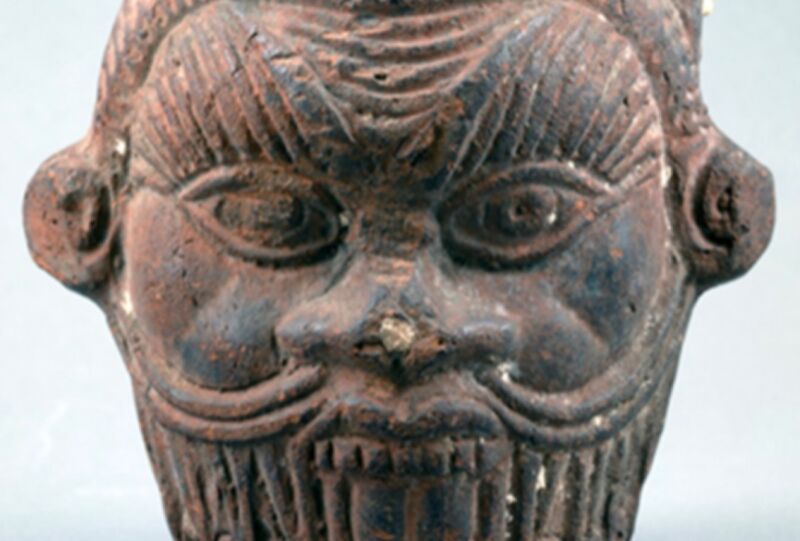
Tampa Museum of Art, Florida
An ancient Egyptian vase in the shape of the deity Bes showed traces of plant chemicals known to cause hallucinations, according to a recent preprint at Research Square. The authors suggest that members of the cult of Bes may have consumed a special cocktail containing the compounds to induce altered states of consciousness.
There is ample evidence that people in many cultures throughout history used various hallucinogenic substances in religious ceremonies or shamanic rituals. That includes not only ancient Egypt, but also ancient Greek, Vedic, Mayan, Inca, and Aztec cultures. The Urarina people who live in the Peruvian Amazon Basin still use a psychoactive brew called ayahuasca in their rituals, and Westerners seeking their own brand of relief have also been known to participate.
According to a 2022 study, dousing the beer served at their parties with hallucinogens may have helped an ancient Peruvian people known as the Wari forge political alliances and expand their empire. As previously reported, the use of hallucinogens, specifically a substance derived from the seeds of the vilca tree, was common in the region during the so-called Middle Horizon period, when the Wari Empire flourished.
Vilca typically grows in the region’s dry tropical forests. The trees produce long legumes filled with thin seeds. The seeds, bark and other parts of the tree all contain DMT, a well-known psychedelic compound also found in ayahuasca brews, but the main active ingredient is bufotenine. It was usually smoked, taken in the form of snuff, or used as an enema. In 1999, a 4,000-year-old pipe laced with bufotenine remains and related paraphernalia was found in an Inca cave in Argentina—the oldest archaeological evidence to date for the use of vilca in South America.
There is also evidence from historical records that a juice or tea derived from vilca seeds was sometimes added to chicha, a fermented drink made from maize or the fruits of the molle tree native to Peru. And people in the state of Tiwanaku were known to mix such hallucinogens with alcohol, especially corn beer. There are monoliths with figures holding a drinking cup in one hand and snuff in the other, and smoking or inhaling vilca was part of a long ritual tradition to promote personal spiritual journeys.
For this latest work, Davide Tanasi of the University of South Florida and his co-authors analyzed an Egyptian ritual vase in the shape of Bes from the second century B.C. Art in Florida. Bes was a popular deity believed to provide protection to households, especially mothers and children. Thus, unlike most other Egyptian gods, images of Bes were common in Egyptian homes. Special chambers were even built to honor Bes and his wife Beset at the Saqqara site near Cairo, which Egyptologists believe may have been used for fertility or healing rituals, though their exact purpose is not certain.
